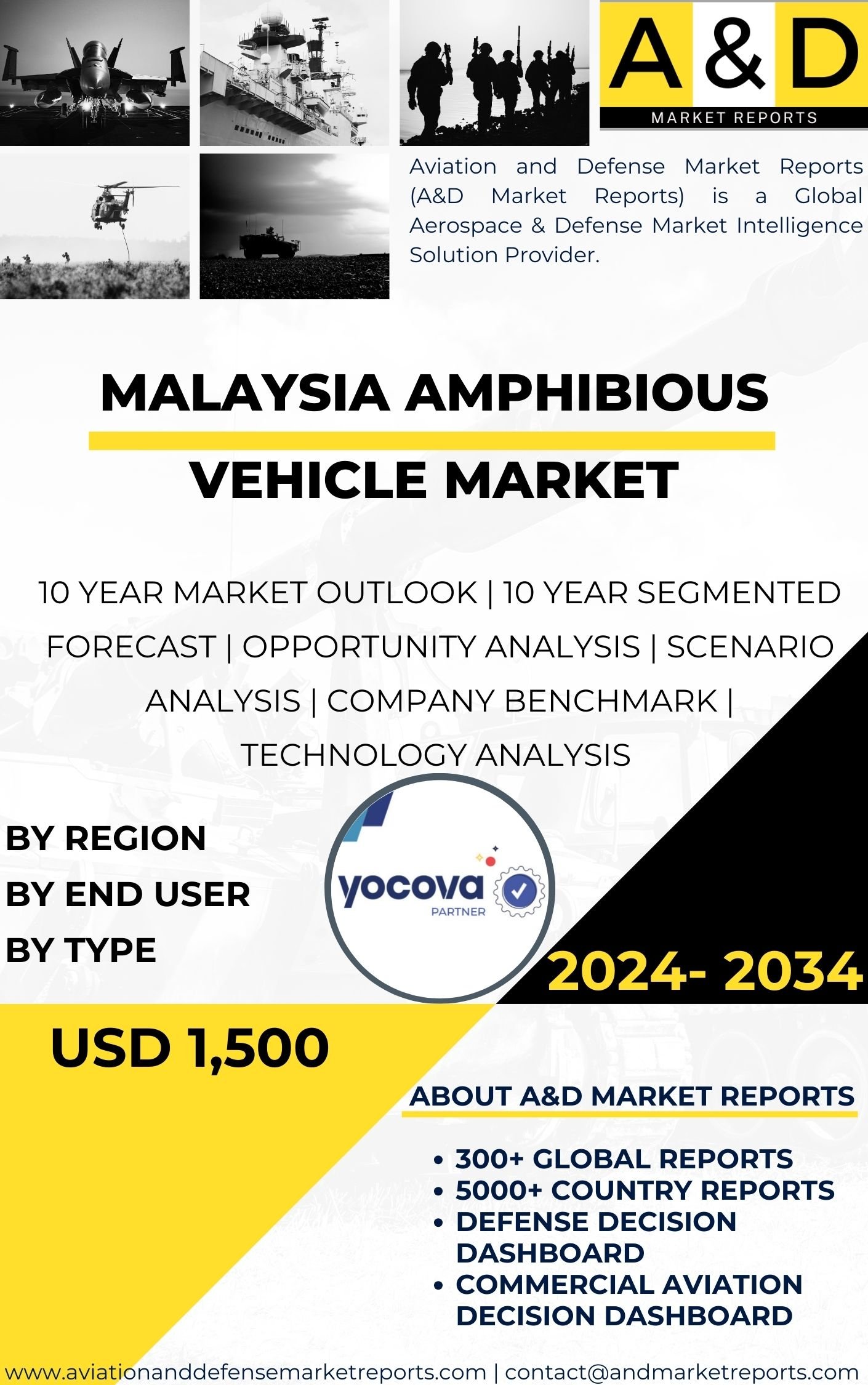Description
Malaysia Amphibious Vehicle Market
The Malaysia amphibious vehicle market has experienced notable growth and interest in recent years as the nation recognizes the importance of enhancing its defense capabilities, improving disaster response capabilities, and supporting various civilian applications. Amphibious vehicles, also known as amphibious transport vehicles (ATVs), are versatile platforms that can operate both on land and in water, making them valuable assets for military, civil, and commercial use.
One of the primary drivers behind the growth of the amphibious vehicle market in Malaysia is the country’s strategic geographical location. Malaysia’s extensive coastline, numerous rivers, and marshlands require versatile and amphibious transportation solutions to navigate various terrains and provide quick and efficient response in disaster situations.
In the military domain, amphibious vehicles offer significant advantages for defense operations, especially in littoral and maritime environments. They provide the capability to swiftly transport troops and equipment from ships to shore, facilitating effective amphibious assaults and beach landings.
Additionally, amphibious vehicles can access areas inaccessible to conventional vehicles, such as riverbanks, muddy terrains, and flooded regions. Their ability to traverse both land and water allows military forces to conduct reconnaissance, surveillance, and humanitarian operations in challenging environments.
Furthermore, amphibious vehicles play a crucial role in supporting disaster response efforts. Malaysia is prone to natural disasters like floods and landslides, which often necessitate rapid and efficient transportation of relief supplies, rescue teams, and affected populations. Amphibious vehicles can navigate through floodwaters and provide essential support during such crises.
In the civilian sector, amphibious vehicles have various applications, including search and rescue operations, ecotourism, and water-based transportation. For instance, they are ideal for eco-tourism in regions with unique wetland ecosystems, as they enable visitors to explore natural habitats without causing ecological damage.
The Malaysia amphibious vehicle market caters to various types of vehicles, including amphibious assault vehicles (AAVs), amphibious armored personnel carriers (APCs), and amphibious recreational vehicles. These vehicles can be designed for specific military applications or adapted for civilian and commercial use.
As Malaysia seeks to develop indigenous defense capabilities, the amphibious vehicle market offers opportunities for local research and development initiatives. Collaborations between the government and local defense companies, as well as partnerships with international amphibious vehicle manufacturers, can facilitate technology transfer and expertise development, fostering the growth of Malaysia’s defense industry.
Moreover, the expansion of the amphibious vehicle market also presents economic benefits through job creation and attracting foreign direct investment. As the demand for amphibious vehicles increases, local manufacturing and maintenance facilities can be established, generating employment and enhancing Malaysia’s defense industrial base.
However, several challenges must be addressed to fully realize the potential of the amphibious vehicle market in Malaysia. One significant obstacle is the need for continuous research and development to improve the performance, mobility, and versatility of these vehicles.
Additionally, ensuring safety and reliability in amphibious vehicles is crucial, especially in challenging and unpredictable terrains. Rigorous testing and quality control measures are necessary to meet safety standards and minimize operational risks.
Furthermore, providing proper training and familiarization to military and civilian operators is essential to ensure the effective and safe use of amphibious vehicles. Operating these vehicles in amphibious environments requires specific skills and knowledge, which must be adequately imparted to users.
Moreover, ensuring environmental sustainability and minimal ecological impact in ecotourism and conservation applications is crucial. Implementing responsible tourism practices and adhering to environmental regulations will protect sensitive ecosystems while promoting sustainable tourism.
In conclusion, the Malaysia amphibious vehicle market has experienced significant growth as the nation recognizes the importance of versatile transportation solutions for military, civil, and commercial applications. Amphibious vehicles provide essential capabilities for defense operations, disaster response, and ecotourism, offering mobility in various challenging terrains and waterborne environments. Efforts to develop indigenous capabilities through research and development initiatives and collaborations with international amphibious vehicle manufacturers are crucial for sustainable growth in the market. Addressing challenges related to technology development, safety, operator training, and environmental responsibility will be essential to ensure the successful adoption and integration of amphibious vehicles in Malaysia’s defense, disaster response, and tourism sectors. By investing in advanced amphibious vehicle technology and fostering partnerships between the government and industry players, Malaysia can enhance its defense capabilities, support disaster response efforts, and promote sustainable ecotourism, contributing to national security, safety, and economic growth.




